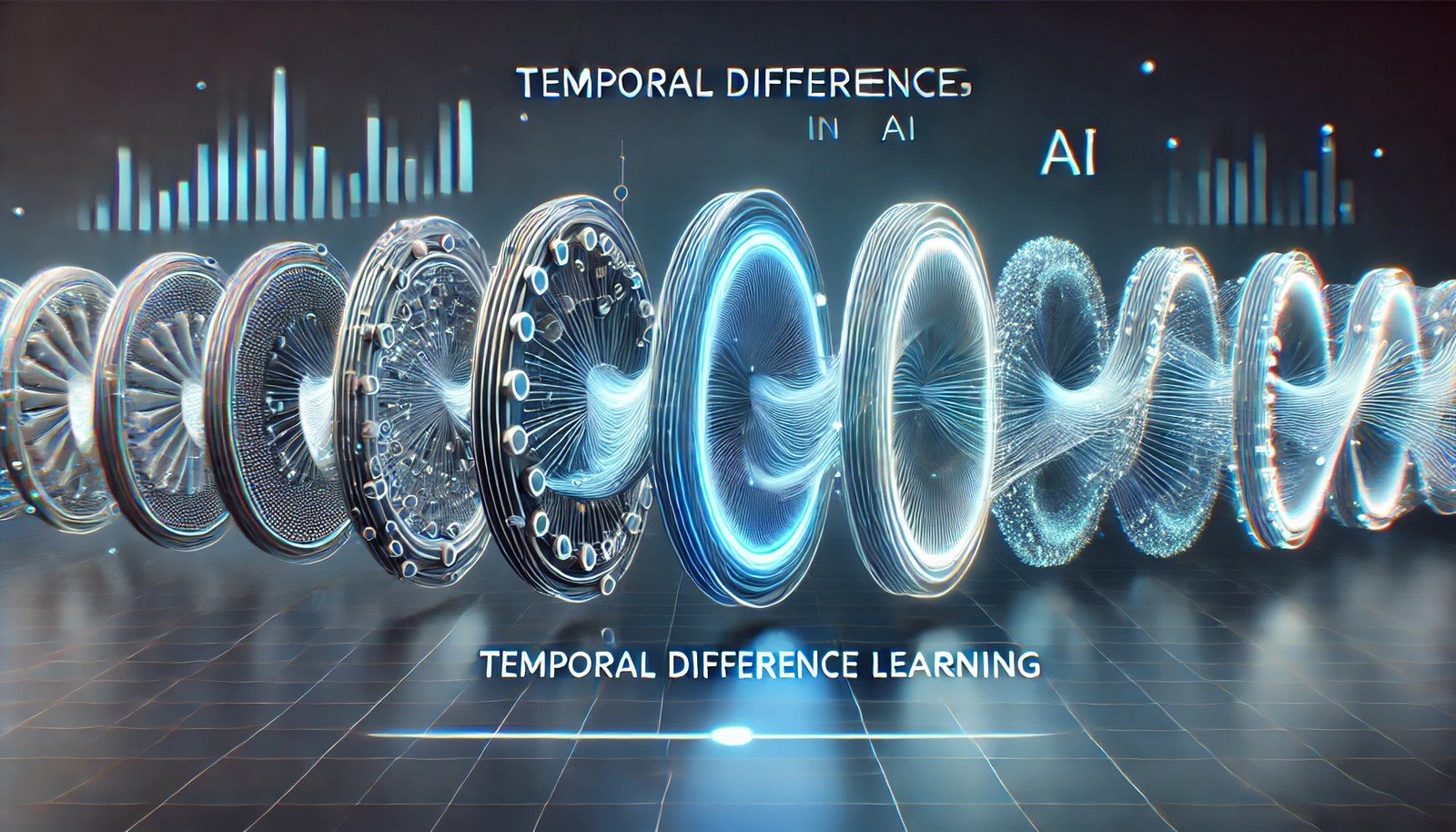Temporal Difference Learning

Quick Navigation:
- Temporal Difference Learning Definition
- Temporal Difference Learning Explained Easy
- Temporal Difference Learning Origin
- Temporal Difference Learning Etymology
- Temporal Difference Learning Usage Trends
- Temporal Difference Learning Usage
- Temporal Difference Learning Examples in Context
- Temporal Difference Learning FAQ
- Temporal Difference Learning Related Words
Temporal Difference Learning Definition
Temporal Difference Learning is a reinforcement learning technique in artificial intelligence that combines ideas from dynamic programming and Monte Carlo methods. It predicts future rewards by learning from discrepancies between predicted and actual outcomes. This method updates value functions based on observed data and adjusts predictions continuously, making it effective in sequential decision tasks where learning occurs over time.
Temporal Difference Learning Explained Easy
Think of it like playing a game where you make guesses about the score you’ll get after each move. If your guess is wrong, you adjust it next time based on the difference. Temporal Difference Learning works the same way; it helps computers improve their guesses about future outcomes by learning from past mistakes.
Temporal Difference Learning Origin
The concept emerged from the study of reinforcement learning and the development of dynamic programming methods in the 1980s. It has since become central to artificial intelligence, especially in applications that require real-time adjustments and predictions.
Temporal Difference Learning Etymology
The term "temporal difference" refers to the comparison between expected and actual outcomes across different time steps, where "temporal" indicates the learning process's time-dependent nature.
Temporal Difference Learning Usage Trends
Over recent years, Temporal Difference Learning has grown in significance, particularly in robotics, gaming AI, and autonomous driving systems, where adapting to new data in real-time is crucial. Its versatility has led to widespread use in AI research, especially in areas requiring adaptive decision-making.
Temporal Difference Learning Usage
- Formal/Technical Tagging:
- Reinforcement Learning
- Predictive Modeling
- Machine Learning - Typical Collocations:
- "temporal difference update"
- "TD learning algorithm"
- "TD error"
- "temporal difference method in reinforcement learning"
Temporal Difference Learning Examples in Context
- Temporal Difference Learning helps a self-driving car adapt to new environments by continuously updating its predictions on safe driving behaviors.
- In gaming, TD learning allows AI opponents to adjust strategies based on player actions, creating more dynamic gameplay.
- Robotics applications use TD learning to predict optimal movements and refine actions based on feedback.
Temporal Difference Learning FAQ
- What is Temporal Difference Learning?
Temporal Difference Learning is a method in reinforcement learning that predicts rewards over time by adjusting predictions based on new data. - How does TD Learning differ from other reinforcement learning methods?
TD Learning updates value functions as it receives feedback, making it more adaptive than traditional methods which may require full data. - What are some applications of TD Learning?
It is used in robotics, autonomous vehicles, and game AI to adapt behaviors in real-time. - Why is the “temporal” aspect important in TD Learning?
Because it learns based on sequences over time, making it valuable in time-dependent decisions. - What is a TD error?
TD error is the difference between predicted and actual outcomes, guiding the learning adjustments. - Can TD Learning be combined with other AI techniques?
Yes, it’s often combined with neural networks to enhance adaptive learning. - What is a “value function” in TD Learning?
It’s a prediction of future rewards for a given state, updated as more information becomes available. - How does TD Learning contribute to AI in gaming?
It enables AI to learn strategies dynamically, adjusting to players' actions. - Why is TD Learning important in autonomous vehicles?
It allows vehicles to adjust predictions in real-time for safer decision-making. - What is the role of TD Learning in predictive modeling?
It helps in refining predictions continuously, which is useful in tasks requiring regular adjustments.
Temporal Difference Learning Related Words
- Categories/Topics:
- Reinforcement Learning
- Predictive Modeling
- Adaptive Algorithms
Did you know?
Temporal Difference Learning played a role in the development of AlphaGo, the AI system that famously defeated a human Go champion. By using TD Learning, AlphaGo could predict outcomes based on previous moves, enabling it to master complex strategies in real-time.
PicDictionary.com is an online dictionary in pictures. If you have questions or suggestions, please reach out to us on WhatsApp or Twitter.Authors | Arjun Vishnu | @ArjunAndVishnu

I am Vishnu. I like AI, Linux, Single Board Computers, and Cloud Computing. I create the web & video content, and I also write for popular websites.
My younger brother, Arjun handles image & video editing. Together, we run a YouTube Channel that's focused on reviewing gadgets and explaining technology.



Comments powered by CComment